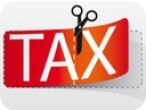Jul 25, 2024
US Economy Expands 2.8% Amid Inflation and Growth Trends
BusinessUS Economy Expands 2.8% Amid Inflation and Growth Trends
US Economy Expands 2.8% Amid Inflation and Growth Trends
Amid a landscape of economic complexities, the US economy has demonstrated resilience, expanding at a robust 2.8% annualized rate in the second quarter of 2024. This growth comes in the face of persistent inflationary pressures and varying growth trends across different sectors. Lets unpack what this means for both businesses and consumers.
Key Factors Influencing Economic Growth
- Consumer Spending: A significant driver of economic expansion, consumer spending soared by nearly 3%. Households continue to spend on goods and services, albeit more cautiously due to inflation worries.
- Business Investments: Robust business investments have significantly contributed to GDP growth. Tech and renewable energy sectors led the charge with substantial capital expenditures.
- Government Expenditure: Increased government spending on infrastructure and health has provided a cushion against inflationary constraints, propelling economic activities.
- Exports: An increase in demand for American products abroad has boosted the nation's exports, supplying a much-needed bump to the GDP figures.
- Job Market Stability: A low unemployment rate has also played a crucial role in this economic upturn, fostering a sense of financial security among consumers.
Inflation: A Double-Edged Sword
Inflation remains both a challenge and an indicator of economic vitality. Current inflation rates hover around 4%, higher than the Federal Reserve's target of 2%. Here are some key points about the inflation scenario:
- Cost of Living: Rising prices have impacted the cost of everyday items, squeezing household budgets. Despite this, consumer spending has not seen a significant downturn, showing resilience in the economy.
- Savings Rates: Higher inflation typically reduces saving rates as people spend more. However, some consumers are diverting funds into investment opportunities, which could bode well for long-term growth.
- Wages: Many sectors are witnessing wage hikes, which while good in the short term, might contribute to sustained inflation if not managed prudently.
Sectoral Growth Highlights
Different sectors are experiencing varied rates of growth, and the overall economic landscape is a mosaic of high, moderate, and low performers:
- Technology: The tech sector continues to thrive, bolstering GDP with innovation-driven growth and extensive R&D investments.
- Healthcare: Due to increased government spending and public focus on health, this sector has seen significant growth.
- Manufacturing: The manufacturing sector is stabilizing but still faces challenges due to supply chain disruptions and raw material cost increases.
- Retail: Despite inflation, retail has shown surprising strength, driven by e-commerce and consumer eagerness to spend disposable income.
- Energy: The renewable energy sector is booming, attracting both private and public investments, which is setting up for long-term sustainable growth.
Future Outlook: Challenges and Opportunities
The future of the US economy is a blend of promising opportunities and considerable challenges. Key areas to watch include:
- Monetary Policy: The Federal Reserve's approach to managing inflation and interest rates will play a pivotal role in sustaining economic growth.
- Global Markets: International trade relations and global market stability are crucial. Tariffs, trade agreements, and geopolitical tensions can significantly impact the economy.
- Climate Change: Addressing climate change will require substantial investments, which could fuel growth in green tech but also strain financial resources.
- Technological Advancements: Innovations in AI, automation, and biotechnology are poised to revolutionize sectors, creating new growth avenues but also displacements.
- Fiscal Policy: Government spending priorities, particularly in infrastructure, healthcare, and education, will shape long-term economic prospects.
In conclusion, while the US economy shows remarkable resilience with a 2.8% expansion, navigating inflation and leveraging growth trends remain critical. Individual and business financial planning will be paramount in these transformative times.
How to Save on Taxes
As we navigate through these economic highs and lows, tax efficiency can significantly aid in financial health. Optimizing tax savings strategies not only keeps more money in your pocket but also helps in prudent financial planning.
Our team of experts can guide you through various tax-saving mechanisms, ensuring you make the most of your hard-earned money. Set up a call with our team now and let us help you navigate the complexities of tax planning and economic trends.
Stay connected
Schedule a free consultation to discuss your goals with an expert
Discover our Podcast
Our expert guests provide valuable insights, tips, and advice, as well as engaging stories and thought-provoking discussions that will leave you with a newfound appreciation and understanding of business.



Join our Community
Discover useful tax saving strategies and advice from experts and fellow members. Our FREE community resources and support help you boost your tax savings, allowing you to retain more of your hard earned money for your family.